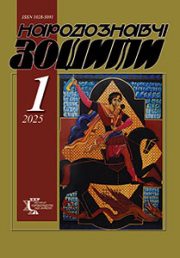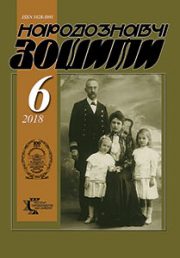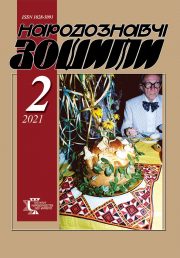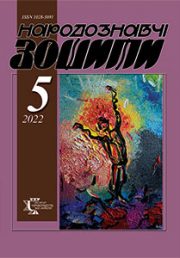The Ethnology Notebooks. 2018, 2 (140), 483—493.
UDK 745
DOI https://doi.org/10.15407/nz2018.02.483
Received 6.02.2018
ORCID ID: https://orcid.org/0000-0001-9199-0270
Selivachov Michael, Doctor of Arts (hab), Professor,
Head of the Design and Technology Department
in the Kyiv National Uneversity of Culture and Arts
Contacts: mik_sel@ukr.net
Abstrakt. Honored Worker of Culture of Ukraine, artist V. Parakhin organized during the 1970s—2000s several dozen centers of traditional woodcarving, basketry, stone processing, decorative painting, etc. He developed and embodied an effective method of forgotten folk crafts restoration on the basis of local peasant legacy research, as well as revealing the natural beauty of material and aesthetic comprehention of techniques. Like all outstanding artists of the 20th century, V. Parakhin published a number of essays on his own creative experience.
Keywords: peasant art, folk art, traditional crafts, art craft, poetics of technique, woodcarving.
REFERENCES
Parakhyn Vasyl’. (1995). Narodne mystetstvo zavtra: vidrodzhennia chy imitatsiia?. 2-hi Honcharivs’ki chytannia. Tezy i reziume dopovidej. Kyiv [in Ukrainian].
Parakhyn Vasyl’. (1996). Narodne mystetstvo zavtra: vidrodzhennia chy imitatsiia?. Ukrains’ka narodna tvorchist’ u poniattiakh mizhnarodnoi terminolohii. Kyiv: Muzej Ivana Honchara [in Ukrainian].
Parakhin Vasyl’. (2006). Liniia v tradytsijnomu narodnomu mystetstvi. Luts’k: Teren [in Ukrainian]. (Knyha perevydana Muzeiem Ivana Honchara 2011 roku).
Navrots’ka, Z. (uporiadnyk). (2014). Promin’ voskresinnia: Vasyl’ Parakhin i joho shkola narodnoho maliarstva u seli Zhuravnyky na Volyni. Novovolyns’k: Format [in Ukrainian].
Kancedikas, A. (1978). Hudozhestvennoe tvorchestvo sovremennoj derevni. Dekorativnoe iskusstvo SSSR, 3, 38 [in Russian].







